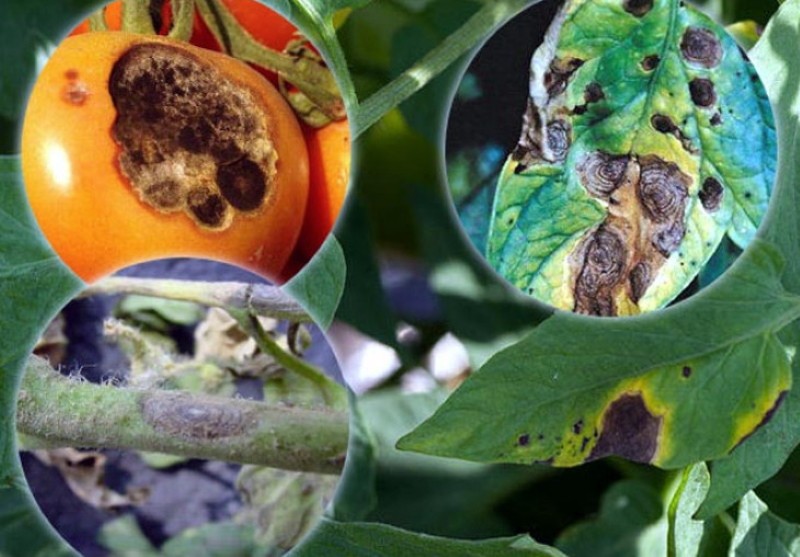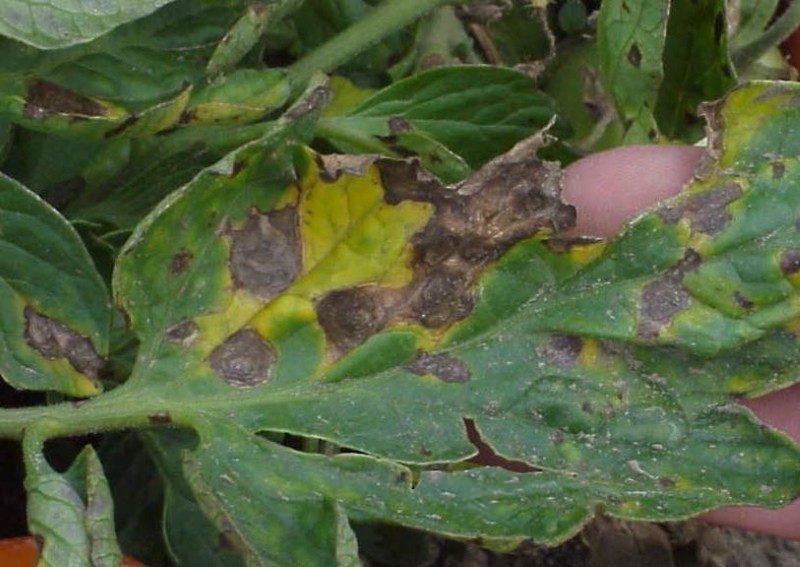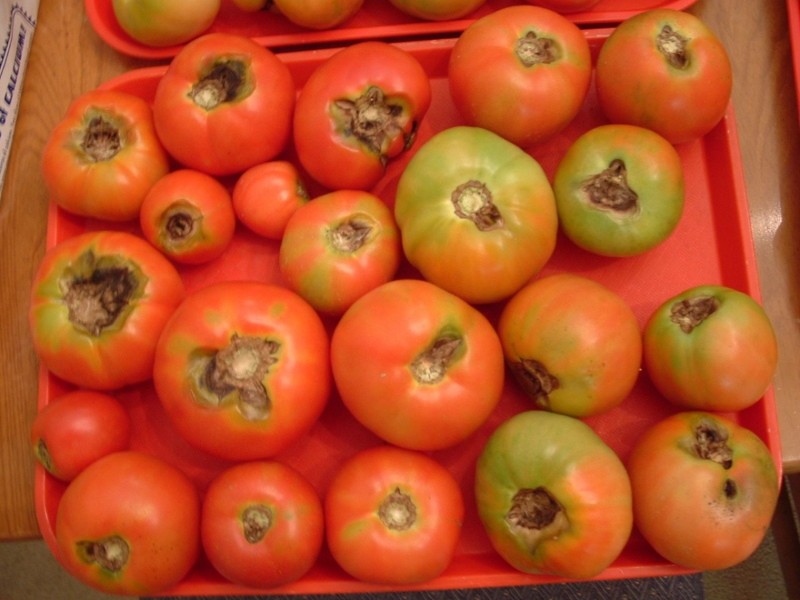How to make the treatment of tomato macrosporiosis effective - we find out the causes, symptoms and measures to combat the disease
 Some fungal diseases are dangerous because they affect plants, including tomatoes, at any stage of their development, for example, macrosporiosis. Treatment of macrosporiosis of tomatoes should be started at the first detection of a bush lesion. If you miss the moment, then in a couple of weeks the fungus will completely destroy the plant along with the harvest. Stems, leaves, fruits - everything is a breeding ground for gluttonous fungi. Moreover, having fallen on the soil together with dead vegetation, they winter safely in it. And next season, the plantings of nightshade crops are attacked with renewed vigor.
Some fungal diseases are dangerous because they affect plants, including tomatoes, at any stage of their development, for example, macrosporiosis. Treatment of macrosporiosis of tomatoes should be started at the first detection of a bush lesion. If you miss the moment, then in a couple of weeks the fungus will completely destroy the plant along with the harvest. Stems, leaves, fruits - everything is a breeding ground for gluttonous fungi. Moreover, having fallen on the soil together with dead vegetation, they winter safely in it. And next season, the plantings of nightshade crops are attacked with renewed vigor.
How does macrosporiosis manifest on tomatoes

The main cause of the disease is fungal infection of plants or soil. Spores can be brought in by the wind, or brought along with inventory or shoes. In the presence of the slightest damage (wounds, cracks), fungi penetrate the plant and begin to multiply. They are especially comfortable if summers are hot and humid, or with abundant night dew.
 Signs of macrosporiosis:
Signs of macrosporiosis:
- first, the fungus affects the lower leaves - dry dark spots appear on them below;
- gradually the affected area passes to the stems and upper leaves, which dry up and die off;
- the fruits are the last to suffer - they also show almost black dry spots that have grown into the flesh;
- after sporulation, dry spots are covered with new spores - a velvety dark bloom.
Treatment of macrosporiosis of tomatoes with fungicides
 The best effect will be given by the use of special preparations, and already at an early stage. Against fungal disease, seedlings and adult plants are sprayed:
The best effect will be given by the use of special preparations, and already at an early stage. Against fungal disease, seedlings and adult plants are sprayed:
- oxychloride (0.4%);
- Bordeaux liquid (1%);
- Tsinebom (0.4%);
- Ridomil;
- Polychoma.
Fungicide treatment is applied up to 4 times, but only before harvesting. The last spraying can be carried out no later than 3 weeks before. And in the fall, it is imperative to treat the area where the infected tomatoes grew with copper sulfate. Otherwise, the fungus will remain in the ground.
Traditional methods of dealing with macrosporiosis
 If the disease has not yet managed to go to the top of the bush and fruits, you can try folk remedies. An iodine solution (20 drops for 8 liters of water) will help to destroy the fungus. Plants are treated with it at least once a week.
If the disease has not yet managed to go to the top of the bush and fruits, you can try folk remedies. An iodine solution (20 drops for 8 liters of water) will help to destroy the fungus. Plants are treated with it at least once a week.
Deals well with diseases and garlic tincture with the addition of hot pepper. To prepare it, grind 200 g of garlic and pour 3 liters of water. After insisting for two days, 0.5 tsp is added to the solution.ground pepper. Tomatoes are sprayed every 10 days.